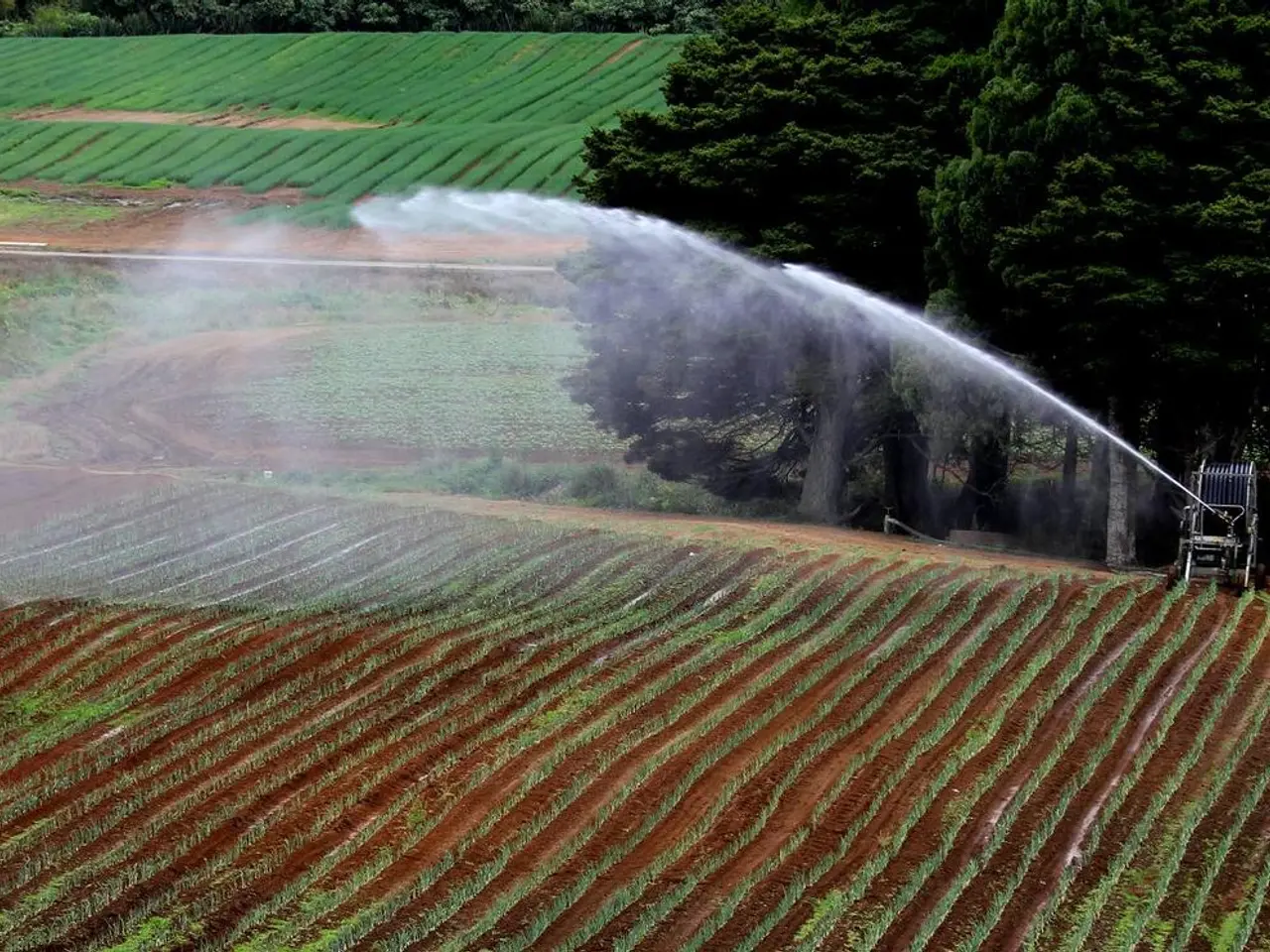Improving Profits: Delving into Return on Investment (ROI) in Agriculture
In the ever-evolving world of agriculture, maximizing return on investment (ROI) has become a critical focus for farmers and agribusinesses alike. By integrating advanced technologies, adopting sustainable farming practices, and capitalizing on emerging income streams, ROI can be significantly enhanced.
Leveraging Technology
The integration of technology plays a pivotal role in modern agriculture. Satellite crop monitoring, AI-driven decision support, fleet/resource management, and blockchain traceability can enhance yields, reduce input costs, optimize soil and resource use efficiency, and improve transparency and operational decision-making.
Developing a Robust Agronomic Strategy
A solid agronomic strategy is essential for success. Aligning farming practices with farmer goals, local soil and climate conditions, cropping systems, and financial pressures ensures that solutions fit seamlessly into real-world farm operations, facilitating adoption and maximizing productivity and profitability.
Investing in High-Quality Farmland
Investing in high-quality farmland is another key strategy. Prioritizing land with rich soil, favourable climate, reliable water rights, and strong infrastructure is crucial. Regions such as the US Midwest (Iowa, Illinois) and Canadian prairies (Saskatchewan, Manitoba) offer resilient environments for diversified and profitable cropping systems. Careful due diligence and ongoing land management are essential.
Implementing Sustainable Farming Practices
Sustainable farming practices are not only beneficial for the environment but also for the bottom line. Improving nutrient use efficiency, recycling on-farm resources, and considering innovative production techniques like hydroponics and aquaponics can increase productivity while reducing environmental impact.
Capitalizing on Carbon Farming and New Income Streams
Engaging in carbon farming projects certified under credible frameworks can generate carbon credits, providing a new income stream for farmers. Using AI-powered soil carbon mapping and satellite verification can reduce monitoring costs and increase credibility, enabling farmers to earn premiums for practices that deliver additional benefits such as biodiversity enhancement.
By combining these approaches, farmers can create synergy. Technology informs precision agronomy and sustainability efforts, quality land selection ensures stable yields, and emerging markets in carbon credits and certifications add diversified income. This integrated approach maximizes ROI by reducing input waste, enhancing productivity, minimizing risks, and unlocking new revenue channels in modern agriculture.
Evaluating Profitability and Making Decisions
Farmers may evaluate both short- and long-term profitability by selecting the timeframe that best fits their needs. Continuous learning and keeping up with the latest developments in agriculture is essential for maximizing returns and staying competitive. Assessing the return on investment of sustainable farming methods can aid in making decisions beneficial to the environment and financial line.
The ROI Formula
The ROI formula is simple: ROI = Net income / Cost of investment x 100. Benchmarking ROI against industry averages can provide insight into the efficiency and profitability of agricultural operations.
Efficient Financial Management
Efficient financial management, including cost control and budgeting, is necessary for ROI optimization. Efficient resource use, such as water and fertilizer management, can reduce input costs and boost return on investment. Market analysis, understanding customer preferences and market trends, can increase profitability by focusing on markets with strong demand and selling items at the appropriate time.
Crop Selection and Diversification
Crop selection, taking into account the local agricultural environment, climatic adaptability, and market demand, can influence ROI. Crop diversification may distribute risks and generate multiple sources of income.
Preventive Pest and Disease Control
Preventive pest and disease control techniques can protect crops and lower possible losses. Integrated pest management (IPM) strategies that incorporate chemical, biological, and cultural control techniques can be successful. Healthy livestock management, including proper housing, feeding, and care, can result in higher profitability.
In conclusion, maximizing return on investment in agriculture requires a multi-faceted approach that integrates technology, sustainable farming practices, smart land selection, and the pursuit of emerging income streams. By adopting these strategies, farmers can not only boost their profits but also contribute to a more sustainable and resilient agricultural sector.
Organic farming could be a potential avenue for diversified income stream and improved sustainability, as it aligns with the focus on reducing input costs, optimizing soil and resource use efficiency, and enhancing transparency.
By considering organic financing options and establishing a robust business plan, farmers can successfully integrate organic farming into their overall strategy, achieving both environmental and financial benefits.
(Note: This sentence is an assumption, as the text does not directly mention the words 'finance' and 'business', but it follows the given text's theme and suggestions for maximizing ROI in various aspects of agriculture.)




